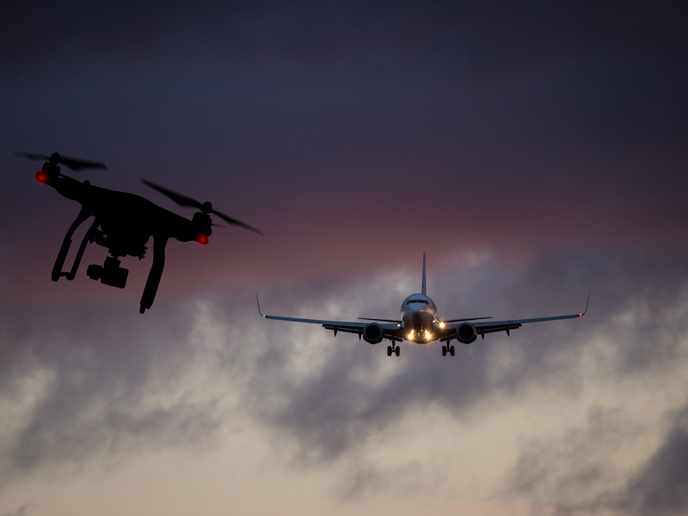Enhancing autonomy and safety in future uncrewed aviation
Live flight demonstrations were recently carried out with the rotary-wing UAV SKELDAR V-200 using a DAA system that can automatically manoeuvre the UAV around intruder aircraft. An important milestone in the development of the European Detect and Avoid System (EUDAAS), the flights proved that DAA technology is capable of mitigating the risks involved when crewed and uncrewed aircraft share the same airspace. The demonstrations included live intruder encounters performed by a crewed lightweight aircraft. They showcased the DAA system’s capabilities in both cooperative and non-cooperative collision course scenarios and are a key step in the EU-funded PJ13 - W2 ERICA project’s objective to achieve safe UAV operation in controlled airspace. As reported in a news item posted on the ‘Asia-Pacific Defence Reporter’ website, the DAA system is based on the European DAA concept and technology developed over the years for both military and civil use. It is currently undergoing further development through the EUDAAS programme as well as validation as part of the European SESAR programme. The system is also being standardised by the European Organisation for Civil Aviation Equipment.
A key role in different sectors
“The Detect and Avoid System is an important step towards the integration of operating several air vehicles, manned and unmanned in the same airspace. It will enable numerous applications in the future where unmanned systems will play a key role in the civilian, law enforcement as well as military sectors,” states DAA programme manager Björn Sjögren of UMS SKELDAR in the same news item. UMS SKELDAR is a joint venture between PJ13 - W2 ERICA project partner Saab and UMS AERO Group, and it is also the manufacturer of the SKELDAR V-200 UAV used in the demonstrations. Sjögren provides further information on the system’s operation: “Combining the sensors for detection, such as EO/IR, AIS, ADSB, [electro-optical/infra-red, automatic identification system, automatic dependent surveillance broadcast] active and passive radars, are already increasing the situational awareness for the operator. Adding an avoid system that can propose manoeuvres to ‘remain well clear’ from others or engaging automatic manoeuvring in a later stage to avoid collision using and coordinating with known standards adds another security layer for both manned and unmanned vehicles. A DAA system that contributes to safe flights will soon enable UASs to operate safely in shared airspace with both manned and unmanned aircraft, significantly expanding the flexible use of these vehicles and their operations.” “We are delighted to be a part of this ground-breaking programme,” remarks Sjögren. “The flight demonstration enabled us to showcase the innovative Detect and Avoid System in a real scenario and was a complete success. This technology will ultimately enable a future of enhanced autonomy and safety in unmanned aviation, with the goal to enable the SKELDAR V-200 to become fully operational in civilian airspace.” The PJ13 - W2 ERICA (Enable RPAS Insertion in Controlled Airspace) project ends in March 2023. For more information, please see: PJ13 - W2 ERICA project web page
Keywords
PJ13 - W2 ERICA, airspace, UAV, uncrewed aerial vehicle, detect and avoid, aircraft



